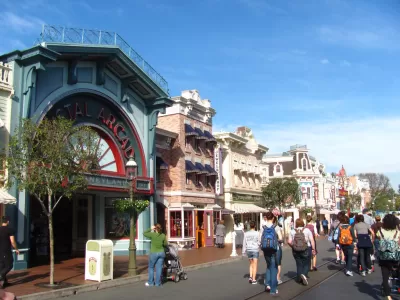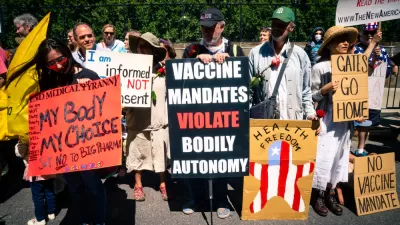According to a study, Disneyland could comfortably accommodate 50% of the 110-acre theme park’s pre-COVID-19 attendance capacity.

When is Disneyland going to re-open? Many want to know, but we still do not have the answer to this question. In the meantime, we can get an idea of the number of folks that the highly popular theme park can accommodate while complying with COVID-19 protocols and requirements, a all thanks to an article by reporter Brady MacDonald that discusses the findings of a study by Brad Kissling, a landscape architect and theme park planner with Thinkwell Group.
Findings of the study reveal:
- Disneyland could theoretically let in 25,000 to 30,000 visitors per day and still allow for six feet of physical distancing per person when the theme park reopens with new COVID-19 health and safety protocols in place.
- In pre-COVID-19 times, theme park density tended to range between 500 and 650 people per acre. During the COVID-19 era, those numbers will need to be cut in half—to 250 to 325 people per acre—to accommodate appropriate physical distancing.
- Disneyland accommodated approximately 545 people per acre in the pre-COVID-19 era and would need to reduce those numbers by 50% to allow for appropriate physical distancing in the “new normal.” On the low end that would be about 25,000 visitors per day and on the high end approximately 30,000.
Disneyland rarely discusses attendance or capacity figures for the park so Thinkwell had to make some assumptions to come up with its estimates. Nevertheless, this is interesting information, especially for those eager to return to Disneyland. The Thinkwell white paper referenced in this article is fascinating and contains graphics that help readers understand density-related issues at theme parks.
FULL STORY: Disneyland could allow for social distancing at 50% capacity, data shows

Study: Maui’s Plan to Convert Vacation Rentals to Long-Term Housing Could Cause Nearly $1 Billion Economic Loss
The plan would reduce visitor accommodation by 25,% resulting in 1,900 jobs lost.

North Texas Transit Leaders Tout Benefits of TOD for Growing Region
At a summit focused on transit-oriented development, policymakers discussed how North Texas’ expanded light rail system can serve as a tool for economic growth.

Why Should We Subsidize Public Transportation?
Many public transit agencies face financial stress due to rising costs, declining fare revenue, and declining subsidies. Transit advocates must provide a strong business case for increasing public transit funding.

How to Make US Trains Faster
Changes to boarding platforms and a switch to electric trains could improve U.S. passenger rail service without the added cost of high-speed rail.

Columbia’s Revitalized ‘Loop’ Is a Hub for Local Entrepreneurs
A focus on small businesses is helping a commercial corridor in Columbia, Missouri thrive.

Invasive Insect Threatens Minnesota’s Ash Forests
The Emerald Ash Borer is a rapidly spreading invasive pest threatening Minnesota’s ash trees, and homeowners are encouraged to plant diverse replacement species, avoid moving ash firewood, and monitor for signs of infestation.
Urban Design for Planners 1: Software Tools
This six-course series explores essential urban design concepts using open source software and equips planners with the tools they need to participate fully in the urban design process.
Planning for Universal Design
Learn the tools for implementing Universal Design in planning regulations.
City of Santa Clarita
Ascent Environmental
Institute for Housing and Urban Development Studies (IHS)
City of Grandview
Harvard GSD Executive Education
Toledo-Lucas County Plan Commissions
Salt Lake City
NYU Wagner Graduate School of Public Service





























